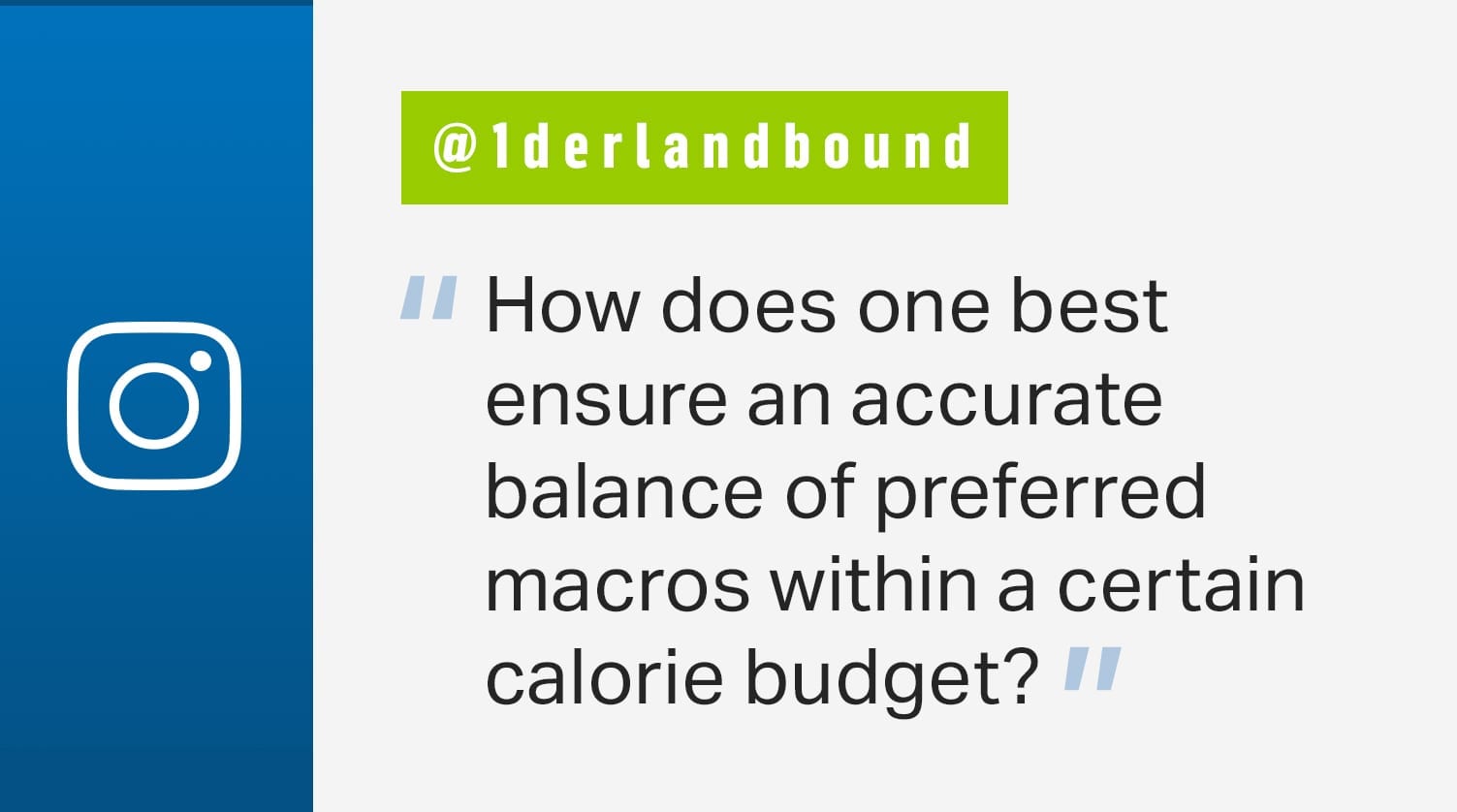

Counting macros (aka protein, fat and carbs) is basically a more structured and organized way to count calories.
- Calculating a total daily calorie budget
- Breaking it down into a ratio of carbohydrates, protein and fat
- Tracking, maintaining and adjusting your ratio depending on your goal, which for most people is either weight loss, weight maintenance or building muscle.
Here, a step-by-step look at how to determine your calorie budget and macro breakdown.
STEP 1: CALCULATE YOUR TARGET CALORIE INTAKE
The success behind balancing macros starts with setting a certain calorie budget. In order to find your target calorie intake, you can use an app like MyFitnessPal, which takes into account factors such as height, weight, activity level, age, gender and fitness goals. If you need help with an individualized plan, it’s always a good idea to consult a registered dietitian or healthcare professional.
STEP 2: BREAK TOTAL CALORIE INTAKE INTO A RATIO OF CARBS, PROTEIN AND FAT
These numbers come in handy, so keep them in your back pocket for now:
- Carbohydrates (4 calories per gram)
- Protein (4 calories per gram)
- Fat (9 calories per gram)
MyFitnessPal’s current default ratio is 50% calories from carbohydrates, 20% calories from protein and 30% calories from fat.
For example: A person with an 1,800 target calorie intake who is following MyFitnessPal’s default would aim to get 225g carbohydrates (1,800 x 0.5 = 900/4 = 225); 90g protein (1,800 x 0.2 = 450/4 = 90) and 60g fat (1,800 x 0.3 = 540/9 = 60).
STEP 3: ADJUST THE RATIO AND TOTAL CALORIE INTAKE TO YOUR GOALS
MyfitnessPal’s default is a good place to start, but to really reach a deep level of success you’ll likely need to adjust it depending on your current needs and goals.
- If your goal is to lose weight, start by lowering your target intake by 5–10% (but no more than 15%).
- If your goal is to build muscle, prioritize protein and carbohydrates by lowering your fat ratio by 5–10% and increasing protein accordingly.
- If you exercise for 1 hour or less daily: 30% high-quality protein, 30% healthy fats, 40% healthy carbs
- If you exercise for 1–2 hours daily: 30% protein, 25% healthy fats, 45% healthy carbs
- If you exercise for 2+ hours daily: Consider seeing a certified sports dietitian or specialist. You’ll need a more personalized plan to lose weight healthfully when exercising at a high intensity.
WHY QUALITY MATTERS
Regardless of your goal when tracking macros, the key is to focus on the quality of calories. You want to fuel your body proactively for better performance and function, not just hit numbers. Carbs fuel energy production, proteins fuel and strengthen your immune system and metabolism, and healthy fats help us absorb certain vitamins, minerals and nutrients to fuel our muscles, brain and tissues. Prioritizing whole foods over processed ones can help you stay within your calorie budget and get the most bang for your buck.
THE BOTTOM LINE
Counting macros takes time and patience, not only to find your optimal ratio, but also to track, calculate and balance your intake. The good news is it’s often the best and most effective way for some people to start paying more attention to their food choices and nutrition labels. It’s also a great way to set goals and keep yourself accountable. As you progress, you’ll likely need to tweak your ratio, which is something a registered dietitian or healthcare professional can help with.




